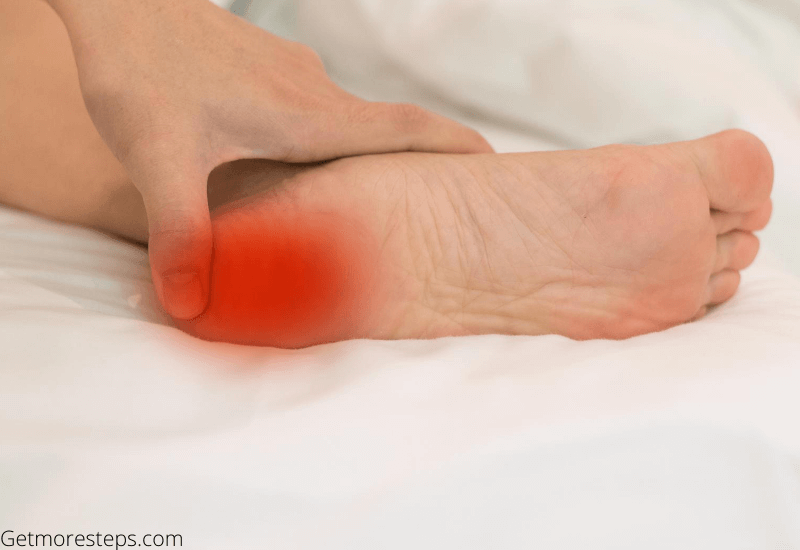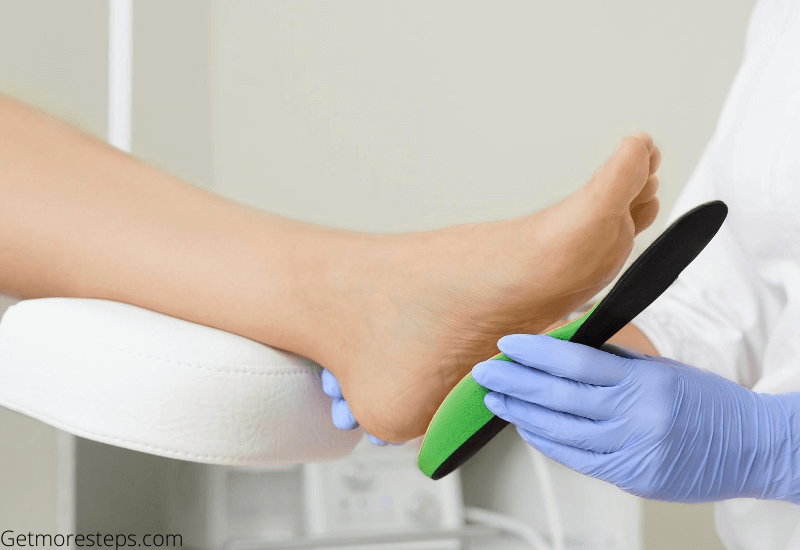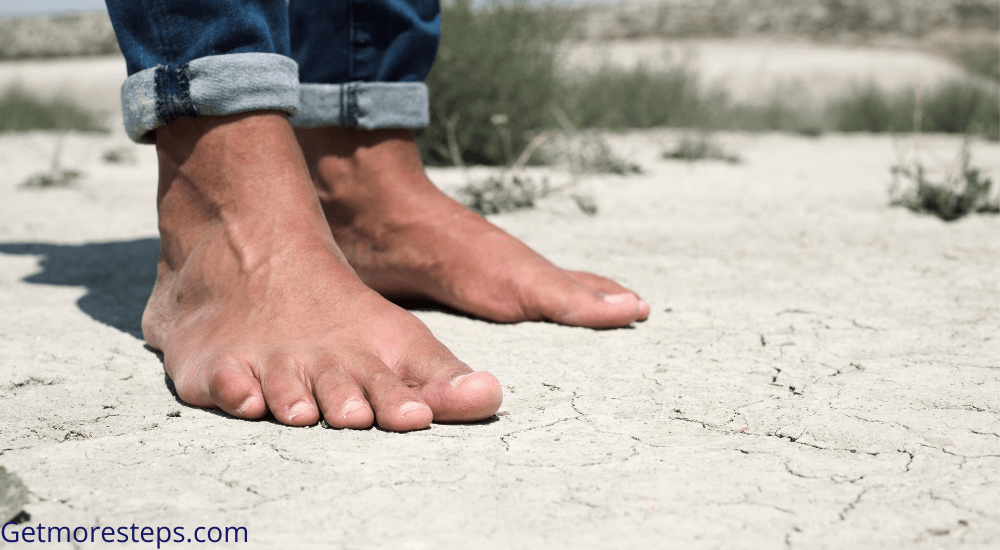Many people have flat and don’t even know they have flat feet. So if you are one of them and wonder what does it mean to have flat feet, you came to the right place. In this article, you will find all the answers to your questions. So without further ado, let’s get started!
What Are Flat Feet?
Contents
Flat feet, also called (pes planes) are fallen arches. Because The feet have no arch or very low arch, the entire sole of the feet touch the ground when standing. Sometimes people with flat feet suffer from over-pronation, which is the ankle that rolls inward when walking. Know that not everyone who has flat feet overpronate.
Over 30% of the population has flat feet, and only 1% of these people develop symptoms such as pain, inflammations, overpronation, and more. Generally, both feet are affected, but It can also happen that the arch collapses only on one foot.
In our foot, we have 26 bones, which are linked to 33 joints. More than 100 ligaments, muscles, and tendons make our feet flexible and help us bear weight and mobilize. Your arch helps distribute your body weight through your feet, legs, and hip.
How Do You Know You Have Flat Feet
One of the best ways to check if you have flat feet is by standing on a piece of paper with your feet wet. If you see a full outline on the paper, it means you have flat feet. Another good way to figure out is by looking at your shoes. Reverse your shoes and check the sole. If the outsole is more worn out on the inner side of the shoes, near the heel, and that the top collapses inward, it shows that you have flat feet.
How Many Types of Flat Feet are There?
There are two types of flatfoot, flexible and rigid. You know that you have flexible flatfoot when you sit, and your arch is normal, but once you stand up, the arch collapses and touches the ground. If you have a rigid flatfoot, there is no arch and the entire sole touches the ground, whether you sit or stand
What Causes Flat Feet
Several factors cause flat feet, below are some of them:
Weak arch: This happens when your arch is over flexible or weak. You can see your arch when you sit, and once you stand, your foot flattens on the ground. Your posterior tibial tendon plays a significant role in supporting the arch of the foot, and if it’s damaged, this could lead to flat feet.
Arthritis: When your joints are inflamed, it’s called arthritis. According to research, there are more than 100 different types of arthritis, affecting about 50 million adults and 300000 children in America. However, the most common type of arthritis is Osteoarthritis. Other related rheumatic conditions that can affect the joint and ligament of the feet and lead to flat feet are Gout, Rheumatoid arthritis, and Fibromyalgia. Tendinitis(inflammation of the tendons) can also cause a flattened arch of the foot.
Foot injury: Flat feet can also be caused due to a foot trauma such as bone fractures, tears in the muscles, strains, to name a few. Prolonged stress to the foot can rupture the ligaments and tendons and lead to faulty foot alignment, causing flat feet.
Genetics: Flat feet can pass directly from one of the parents to their children through genes. If your mother or father have flat feet, it’s possible that you inherited it from them. And there is a chance that you’ll transmit it to your children too.
There are muscular and nervous system disorders that cause flat feet. Here are some examples:
Cerebral palsy: This is when there are Abnormal contractions of muscles in the feet, which is generally caused by damage that occurs to the developing brain of the child before, during, or after birth.
Muscular Dystrophy: This is an inherited disorder that destroys and weakens the muscles over time. This disorder and weakness are caused due to a lack of protein.
Spina bifida: This is a birth disorder that occurs when the spinal cord and spine don’t develop normally. It’s a kind of tube defect. This term Spina Bifida is a Latin word that means open” “spine or “split.”
Age: When aging, the ligaments begin to stretch out and, as a result, reduce the weight of your arch and lead to flat feet.
Pregnancy: Pregnant women often develop flat feet, but it’s usually permanent. Because of the extra weight and the joints’ increased looseness, the arch of the foot flattens out.
Tarsal coalition: This condition is when the joint between two bones in the foot doesn’t develop properly. This abnormal connection, which can be composed of fibrous tissue, cartilage, or bone, can restrict motion and cause pain in one or both feet. This coalition can be detected at birth, but generally, it doesn’t cause any issues until the teenage years.
Diabetes: People with diabetes that is uncontrolled or prolonged often develop a condition called Charcot’s foot, which leads to flat feet.
Obesity: Overweight people tend to have flat feet due to their weight putting too much pressure on the arch.

What Are the Symptoms of Flat Feet
Most people with flat feet usually don’t experience any pain or symptoms. But there are cases where flat feet cause back, foot, and leg pain, depending on the severity of their condition. The arch has an essential role in determining how you walk. If it’s not flexible and sturdy enough to support stress and various terrains, you might experience symptoms associated with flatfeet.
Discomfort and pain of the feet: This is one of the most common symptoms caused by flat feet. Strained ligaments and muscles can cause pain over time in your flat feet.
Overpronation: Flat feet generally tend to point outwards when standing due to overpronation. Another sign you have flat feet is when your foot rolls inward while you walk. Take a closer look at your shoes; your outsole should be more worn out on the inner side if you have flat feet.
Hip and knees pain: Because flat feet cause misalignment to your legs and hip, your body’s weight is not distributed evenly. This can put stress on your hip joints and knees and cause pain and discomfort. It can also cause pain in your lower back, lower legs, and calves due to poor weight distribution and stress.
Swollen feet: Flat feet can make your feet swell along the inside of the ankle, especially after standing long hours.
If you have experienced one of the symptoms above, don’t wait any longer and ask your podiatrist to examine feet.

What Complications and Problems Are Related to Flat Feet.
Generally, flat feet cause overpronation and, as a result, creates a misalignment of the foot. When the toes are not aligned properly when you walk, bunions are likely to occur.
Callus formation: This symptom is caused by an abnormality in the gait cycle, meaning overpronation due to flat feet. Since the body weight is not distributed well when you have flat feet, it causes the skin to thicken and form corn or callus on your soles’ surface.
Plantar Fasciitis: People with flat feet are more prone to developing plantar fasciitis due to the feet leaning inwards when walking or standing. Plantar fasciitis causes inflammation of ligament in the feet’ soles.
Arthritis: Most of the time, flat feet make the foot roll inward, which puts increased tension on the joints and causes inflammation of the joints. The legs’ misalignment due to flat feet can cause the development of arthritis in the hips, knees, and ankles.
Tendonitis: The posterior tibial tendon and Achilles tendon becomes inflamed when it’s overused.
Flat feet can change your posture when you walk or stand. It can also change the way you walk and, as a result, lead to injuries to your knees, back, hips, and feet. So, try to pay attention to your feet and take care of them well!

How Do I Get Over these Problems Related to Flat Feet
It’s not because you have flat feet that you need a treatment, quite the contrary. You’ll need to seek advice or treatment from a podiatrist only if you feel pain in your feet, hips, knees, or back.
It might require some investigations like CT, X-Rays, or MRI scans to determine the issue, but once it is detected, there are many solutions to treat the symptoms. Your podiatrist can suggest some devices or exercises to help support your feet’ alignment and decrease the pain and discomfort.
Depending on the inflammation severity, your doctor will prescribe some anti-inflammatory medicals such as NSAIDs or Ibuprofen. If you have arthritis, diabetes, or any other muscular symptoms, your doctor will treat them accordingly. Those with severe flat feet might need surgery to restore the low arch only if orthotics didn’t help.
Some exercises really help in managing symptoms of flat feet. The American Academy of Orthopedic Surgeon (AAOS) recommends following physical therapy exercises to improve the feet’ flexibility and strength and prevent worsening the condition.
Here are some examples of exercise for flat feet:
Golf ball roll: Place a golf ball under your foot while you seat and roll it back and forth under the arch of the foot. This simple exercise will stretch the ligament of your plantar fascia and reduce pain.
Heel cord stretching: The purpose of heel cord stretching is to stretch the Achilles tendon. Stand facing the wall and put one leg behind you, keeping it straight. The heel needs to be flat on the floor, and the toes point in slightly. Place the other leg forward with a slight bend. You must keep both heels flat on the floor and push your hip forward toward the wall. For about 30 seconds, hold this stretch and another 30 seconds to relax. Repeat this exercise 2 sets of 10. There are other exercises, but I will mention them in another article about it.

Conclusion
To wrap it up, I hope you found your answers in this article. If you have flat feet, I recommend you check with a podiatrist if you need some device to prevent injuries in the future, even if you have no pain. Just a check-up! And of course, if you suffer from pain, you’ll need to check this out.
Do you have flat feet? If so, how do you feel about it? You are more than welcome to share your experience in the comments below.

I don’t know about you, but I love my feet because they allow me to walk and go wherever I want to go. Without them, I would be lost! So I always spoil them with a good pair of walking shoes to make sure they are as comfortable as possible. If you take care of your feet, they will take care of you and your health. Well, fitted shoes will protect them and allow you to get more steps without pain!
Read more about me
